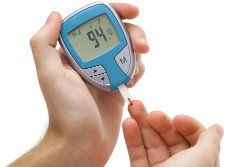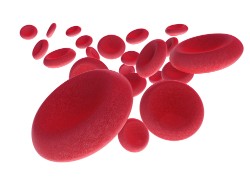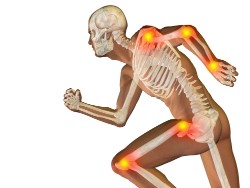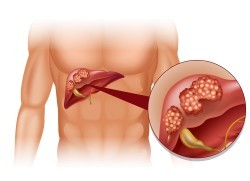The effectiveness of interval fasting for weight loss: What do the scientists say?
Interval fasting is one of the fairly new, but extremely popular directions in dietetics. The method allows not only to reduce body weight, but also to improve the health of the body as a whole.
Before switching to a fasting regime, it is necessary to consult a doctor in order to exclude the presence of contraindications and the development of adverse reactions in the future.
Content
What is short–term fasting?

Interval fasting is a diet in which periods of eating alternate with periods of fasting.
The most popular is the 16/8 scheme, which assumes that you need to fast for 16 hours every day, and use an 8-hour interval for eating.
Intermittent eating has Proven beneficial properties for the body. It allows you to prolong life by reducing the incidence of malignant neoplasms, diseases of the cardiovascular, digestive, endocrine and central nervous systems.
However, the most popular use of periodic fasting for weight loss.
How it helps to lose weight – 5 facts
Interval fasting is effective for weight loss due to several mechanisms. For example, according to foreign experts, the technique allows you to lose from 3 to 8% of weight even in a short period of time (from 3 weeks). The main mechanisms of action on the metabolism of adipose tissue are discussed below.
1. Acceleration of metabolism
 Scientists from the UK discovered
that during fasting, metabolism accelerates by about 3.6%.
Scientists from the UK discovered
that during fasting, metabolism accelerates by about 3.6%.
As a result, there is a faster breakdown of lipids in fat depots (mainly abdominal fat) in order to obtain energy to meet the needs of the body.
Increased breakdown of adipose tissue cells also compensates for the loss of body temperature observed against the background of prolonged fasting.
2. Reduced insulin production
 Insulin is a hormone that promotes the absorption of glucose by all cells of the human body.
Insulin is a hormone that promotes the absorption of glucose by all cells of the human body.
When the intake of food into the body stops, blood glucose becomes less, therefore, as claim foreign experts, insulin stops being produced. In response, all cells of the body secrete glucose back into the blood in order to correct energy starvation.
If such "glucose journeys" are repeated systematically, then body weight begins to decrease. The effect is also due to the loss of important properties of insulin, which cannot be realized due to its low content in blood plasma:
- Ensuring the synthesis of fatty acids in the liver;
- Blocking the breakdown of adipose tissue.
3. Hormonal changes
 A sharp change in eating behavior affects the state of the entire body, in particular, the level of release of a large number of hormones changes.
A sharp change in eating behavior affects the state of the entire body, in particular, the level of release of a large number of hormones changes.
Australian Experiments demonstrate that in the process of fasting, there is an increase in the production of norepinephrine by 2-10 times.
Such changes lead to a sharp decrease in blood glucose levels and the beginning of a change in metabolic activity. The path of "energy production" switches to adipose tissue, which begins to deteriorate intensively.
The release of somatotropic hormone (STH) also increases (at least 5 times). He promotes additional preservation of muscle mass and activation of adipocyte destruction.
4. The oppression of hunger
 When food intake is limited, the body develops a strong feeling of hunger, which tends exclusively to increase. As a result, you want to eat more and more food. Such a desire is the leading reason for people's refusal from interval fasting.
When food intake is limited, the body develops a strong feeling of hunger, which tends exclusively to increase. As a result, you want to eat more and more food. Such a desire is the leading reason for people's refusal from interval fasting.
Fortunately, already on 2-3 days the feeling of hunger begins to dull. This is due to the systematic migration of glucose into and out of the cell, as well as improved trophic and microcirculation at the brain level.
On day 7-10, a person begins to endure periods of hunger with almost no discomfort.
5. Preservation of muscle tissue
 One of the most unpleasant side effects of many modern diets is that weight loss occurs not only due to fat deposits, but also muscle tissue.
One of the most unpleasant side effects of many modern diets is that weight loss occurs not only due to fat deposits, but also muscle tissue.
American scientists claim that intermittent hunger has a lot of advantages over dieting. With it, there is the least loss of muscle mass. Positive properties are noted only with a short period of fasting (up to 24 hours).
It should be noted separately research , conducted in 2007. The exclusion of only 1 meal per day (for example, a hearty lunch) allows you to lose your total body weight, while even slightly increasing muscle mass.
Other useful properties
Intermittent fasting has a lot of other benefits in relation to the human body:
- Reduction of cancer incidence.
- Correction of dyslipidemia. As a result, the development of atherosclerosis is prevented (by reducing total cholesterol, TAG, LDL and VLDL) and related abnormalities (coronary heart disease, myocardial infarction, CHEM, stroke, etc.).
- Prevention of type II diabetes mellitus and other disorders of carbohydrate metabolism.
- Lowering blood pressure.
- Prevention of dystrophic brain diseases (Pick's disease, Alzheimer's disease, Parkinson's disease).
- Overall increase in life expectancy.
4 best schemes
There are many protocols for periodic fasting. It is recommended to stick to one option. Changing one method of fasting to another is perceived negatively by the body (stress reaction).
Below are the 4 main protocols that are most effective to use specifically for weight loss.
1. Protocol 16/8
 This is the most common and studied periodic fasting protocol.
This is the most common and studied periodic fasting protocol.
According to him, it is necessary to eat food every day for any 8-hour period of time, and 16 hours should be allocated for fasting.
For example, you can eat from 12-00 to 20-00 or from 13-00 to 21-00. The time interval is selected individually for each person.
To comply with this eating pattern, it is enough just to give up breakfast and not eat at night after dinner.
Water can be drunk all day and in any quantity. Tea or coffee is also allowed in the morning, without any additives.
The method is ideal for beginners who want to lose weight. In the initial stages, it is recommended to give up eating for only 12-15 hours a day, gradually increasing the interval to 16 hours.
2. Protocol 5:2
 According to the protocol, for 5 days you eat without restrictions (within reason). But 2 days a week it is necessary to limit food intake as much as possible: consume no more than 500 calories for women, and no more than 600 calories for men.
According to the protocol, for 5 days you eat without restrictions (within reason). But 2 days a week it is necessary to limit food intake as much as possible: consume no more than 500 calories for women, and no more than 600 calories for men.
The two days allotted for fasting do not necessarily have to follow each other. You can choose any 2 days (for example, Monday and Friday).
3. Eat-starve-eat
 The essence of the method is a complete refusal to eat for 24 hours 1 or 2 times a week. This fasting option was proposed by fitness expert Brad Pilon, who himself has been an adherent of his "creation" for several years.
The essence of the method is a complete refusal to eat for 24 hours 1 or 2 times a week. This fasting option was proposed by fitness expert Brad Pilon, who himself has been an adherent of his "creation" for several years.
During fasting, it is allowed to drink water. The minimum volume is 1.5 – 2.5 liters; the maximum is optional.
This option is suitable for far from everything. If your body has not experienced such stress before (due to refusal of food), it will experience a strong feeling of hunger, which is likely to force a person to give up the diet.
The restriction also applies to persons suffering from psychiatric and gastroenterological diseases (peptic ulcer of the stomach and duodenum) profile.
4. The Warrior's Diet
 The power supply system was first proposed by the artist and former law enforcement officer Ori Hofmekler.
The power supply system was first proposed by the artist and former law enforcement officer Ori Hofmekler.
According to the diet, only a small amount of raw fruits and vegetables can be consumed throughout the day. But in the evening you need to have a big dinner.
It turns out that the body starves almost all day (over 20 hours), and before going to bed (3-4 hours) receives a large portion of absolutely any food.
Despite all the simplicity, this diet is extreme and entails a very high load on the human body, primarily on the gastrointestinal tract.
The massive volume of incoming food creates conditions for the centralization of blood circulation and the development of such manifestations: weakness, dizziness, flashing flies in front of the eyes, loss of consciousness.
3 main drawbacks
Most people go into "starvation mode" without developing side effects. However, individuals may experience difficulties. A number of the main negative aspects of interval fasting are considered below.
1. Time to adapt
 A sharp restriction of meal time is not only a small psychological trauma, but also stress for the whole body.
A sharp restriction of meal time is not only a small psychological trauma, but also stress for the whole body.
It may take up to 2-3 weeks to get used to a new diet and turn off "psychological barriers".
The mechanism of addiction is especially difficult for people over the age of 40.
2. The presence of contraindications
 It is recommended to abandon this method of weight loss in the presence of one of the conditions described below:
It is recommended to abandon this method of weight loss in the presence of one of the conditions described below:
- Body weight deficiency (weight deviation of more than 15% of the norm or body mass index (BMI) less than 18.5).
- Tuberculosis of any organ system.
- Type I diabetes mellitus.
- Any thyroid pathology accompanied by a hyperthyroid background.
- Heart rhythm and conduction disorders (special attention is paid to AV blockades of II and III degrees).
- Condition after myocardial infarction (within 30 days).
- Chronic circulatory insufficiency. Degree – from IIb to III.
- Chronic viral hepatitis (any phase of the course).
- Chronic alcoholic hepatitis (in the acute phase).
- Cirrhosis of the liver.
- Chronic liver or kidney failure of any origin.
- Thrombophlebitis.
- Chronic gastritis in the acute phase.
- Acute pancreatitis.
- Arterial hypotension.
- Cholelithiasis, as well as diseases accompanied by obstruction of the biliary tract.
- Peptic ulcer of the stomach and duodenum.
- Pregnancy.
- Lactation period.
- Age less than 14 years.
- Age over 75 years.
3. The presence of side effects
 In a healthy person, undesirable reactions develop extremely rarely. The following side effects are most common:
In a healthy person, undesirable reactions develop extremely rarely. The following side effects are most common:
- Constipation. Due to insufficient admission fiber and the scarcity of the diet. The problem is usually easily solved after taking any herbal laxative (Frutolax).
- Dizziness. The symptom signals an insufficient intake of nutrients into the body. There may also be: drowsiness, adynamia, general and muscular weakness, decreased physical and mental performance. The only way out is to increase the variety of the menu.
- Headaches. They are most often found in people who switch to intermittent fasting for the first time. They are caused by insufficient blood flow to the central parts of the nervous system. In order to reduce the severity of symptoms, it is recommended to rub the collar area with a waffle towel, massage the head with palms (from forehead to crown). If such methods do not help, you should consult a specialist or stop fasting.
Side effects may also occur if contraindications are neglected. For example, in diseases of the gastrointestinal tract (gastritis, peptic ulcer, gallstone disease), it is possible to aggravate the symptoms of the underlying disease, in the presence of ulcers, a higher frequency of perforations or penetrations.
Important tips
 Below are a number of tips that will help maximize the positive effect of fasting – to lose more extra pounds:
Below are a number of tips that will help maximize the positive effect of fasting – to lose more extra pounds:
- Defining personal goals. In most cases, a person who goes on such fasting has a specific goal – to reduce body weight aesthetically or improve health, etc. The final goal must be mandatory, since it will allow you to bring what you started to the last stage. The lack of psychological attitudes is the key to failure in the diet. There are no results without true faith in them.
- Determination of energy needs. The technique of interval fasting does not prohibit the amount of food consumed during periods of absence of hunger. This means that body weight can begin to add if the caloric content of the food consumed is significantly higher than the physiological norm. It is recommended to normalize food intake and observe the calorie content of the diet.
- Making an individual meal plan. If you are interested in losing body weight, it is recommended to plan what you will eat, as well as in the next few days. This will allow for more accurate accounting of the caloric content of the daily diet, as well as its qualitative composition, which will prevent the development of vitamin, macro- and microelement deficiencies.
- Health monitoring. Regardless of the intermediate results of fasting, you should pay attention to your health and register any deviations in a timely manner. A change in the emotional background, blood pressure, heart failure or palpitation in the chest, constipation, abdominal pain and any other pathological manifestations uncharacteristic for a person is a reason to abandon the technique and seek help from specialists.
Conclusion
Periodic fasting is a complex technique that implies compliance with certain rules. It really helps to reduce body weight, but it is extremely important to normalize the volume (calorie content) of food consumed.
Before switching to any of the protocols, it is advisable to consult with a specialist in order to make an adequate assessment of the condition of the body (exclude the presence of contraindications and the likelihood of side effects in the future).


